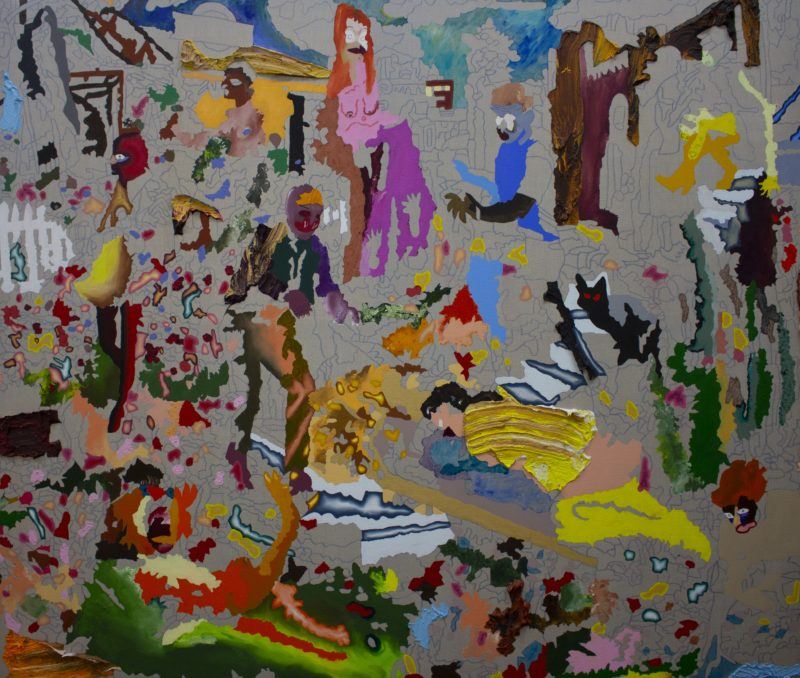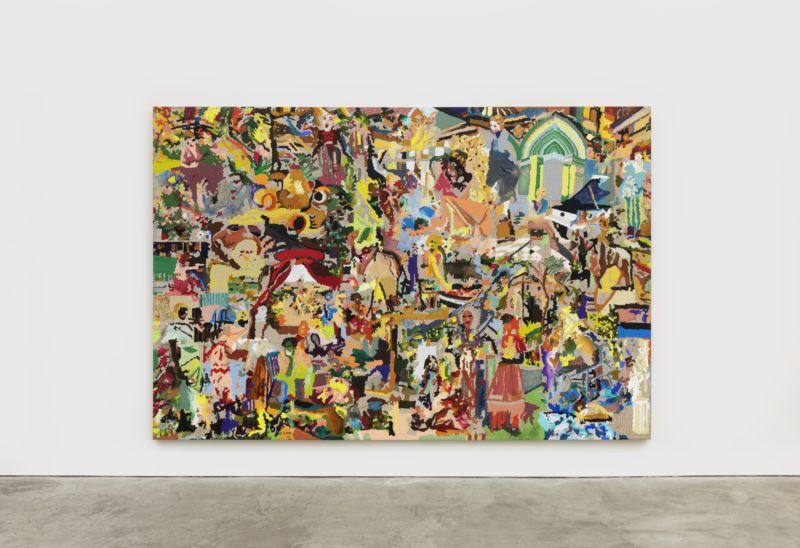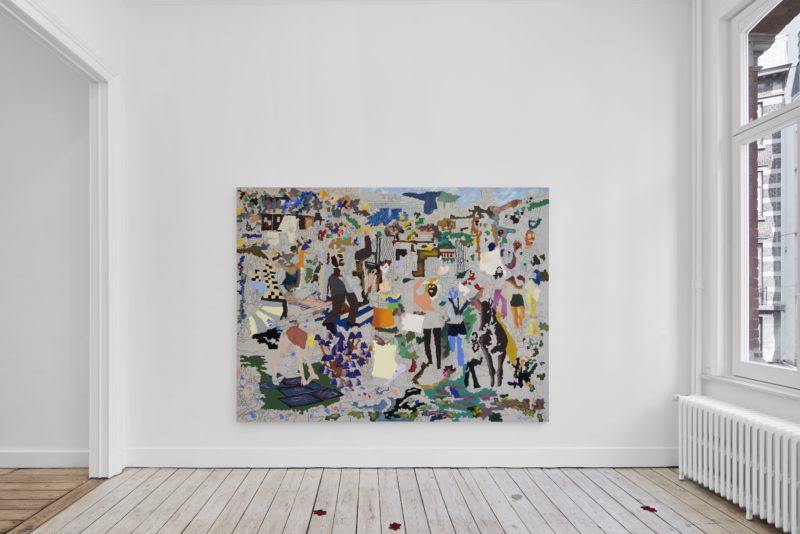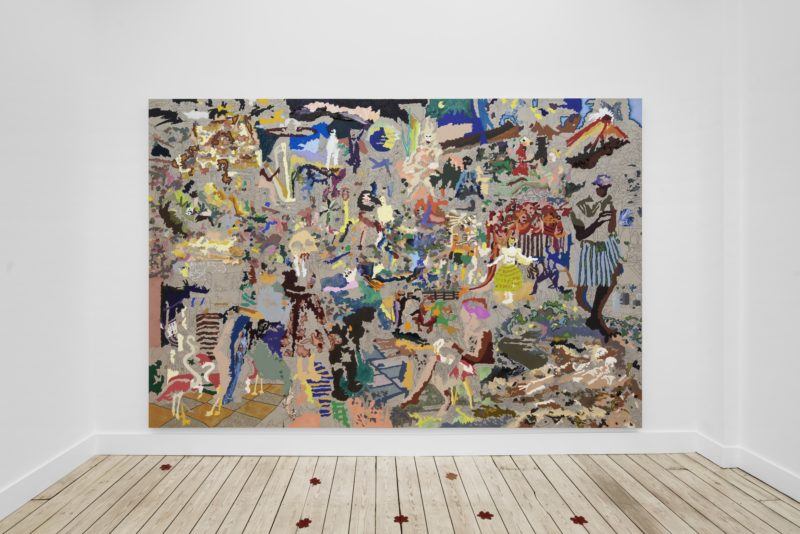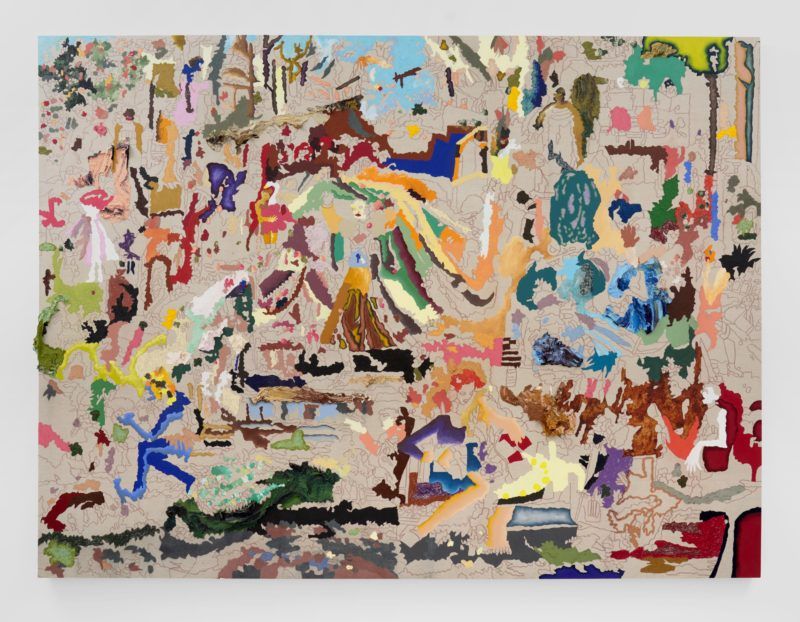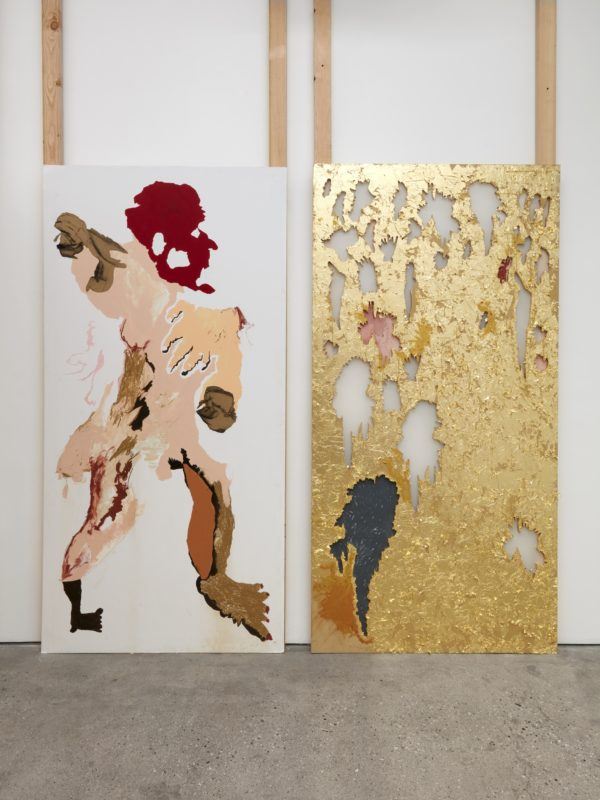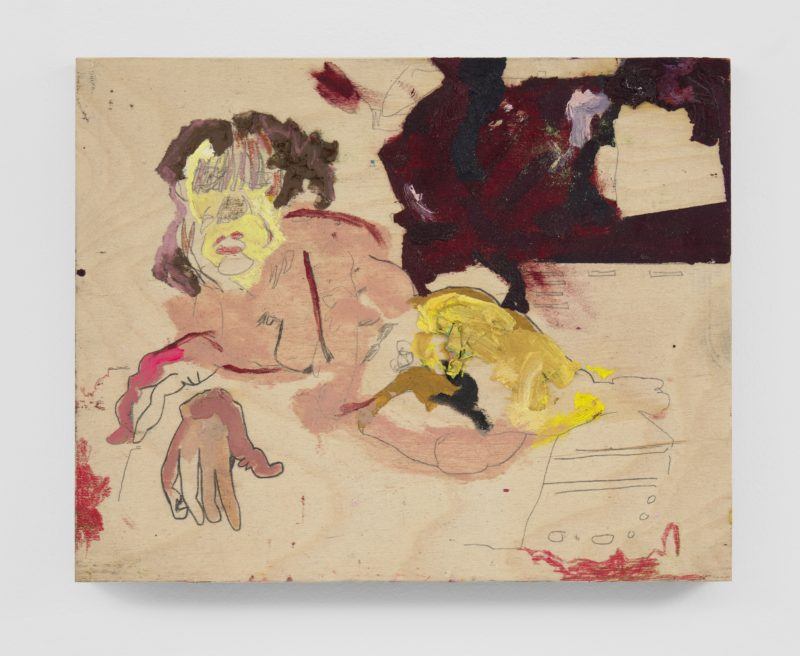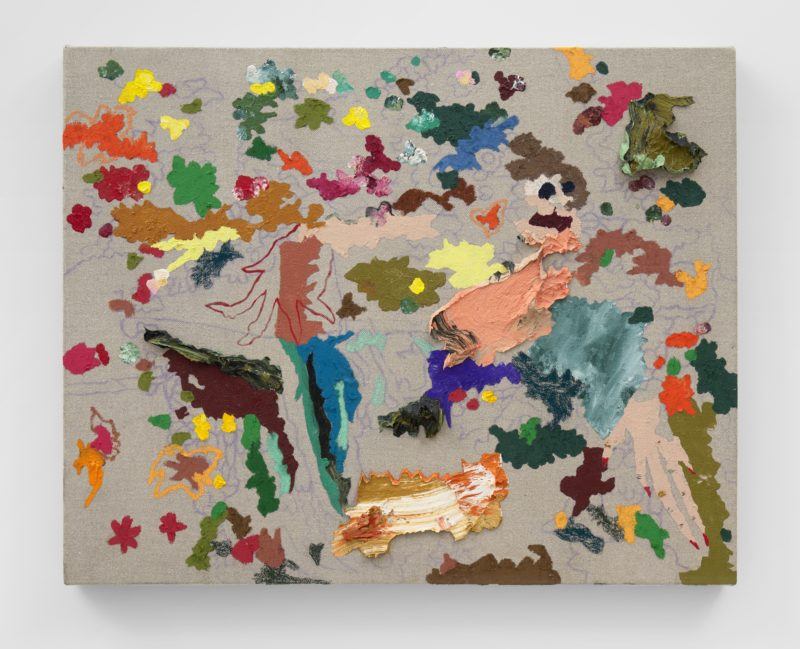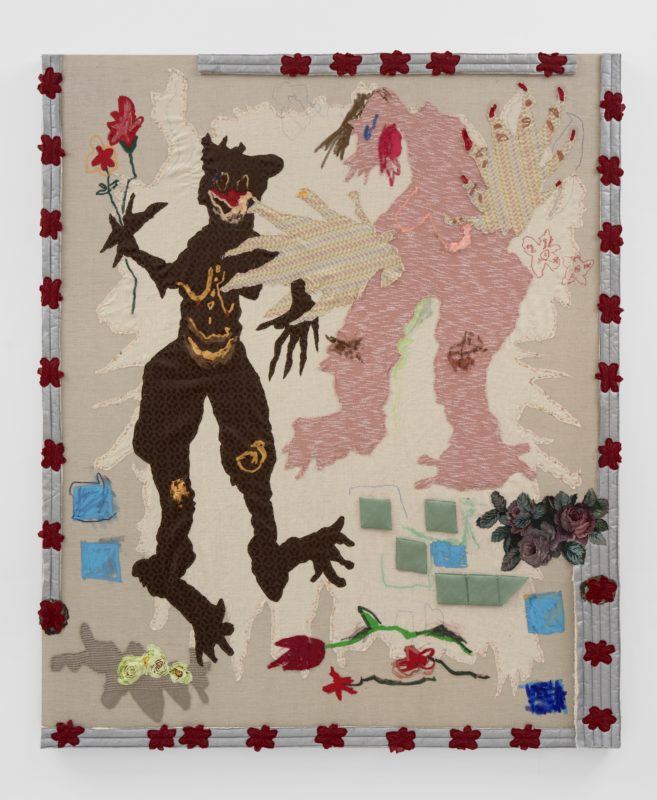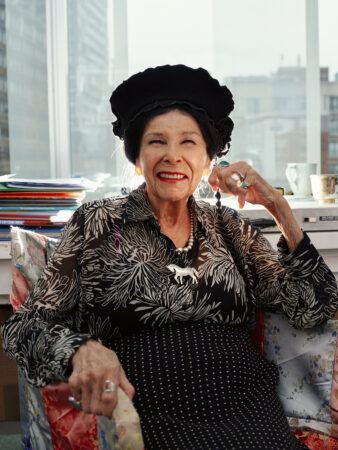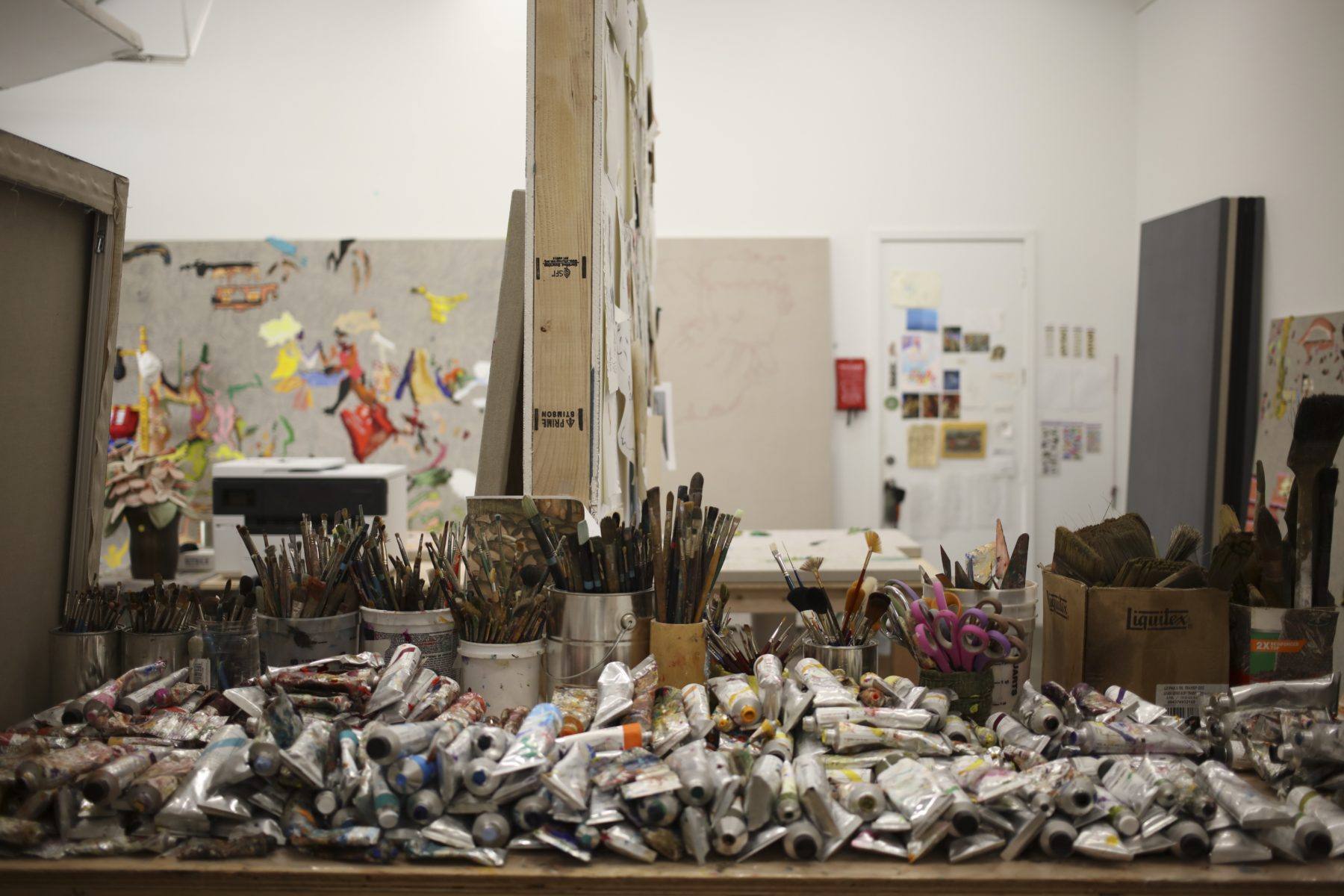

In the Studio
Cindy Phenix imagines new collectivities through collage.
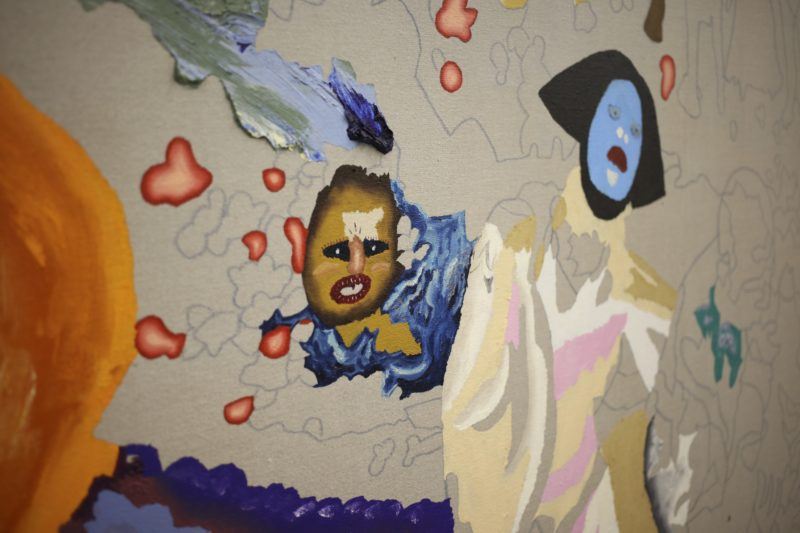
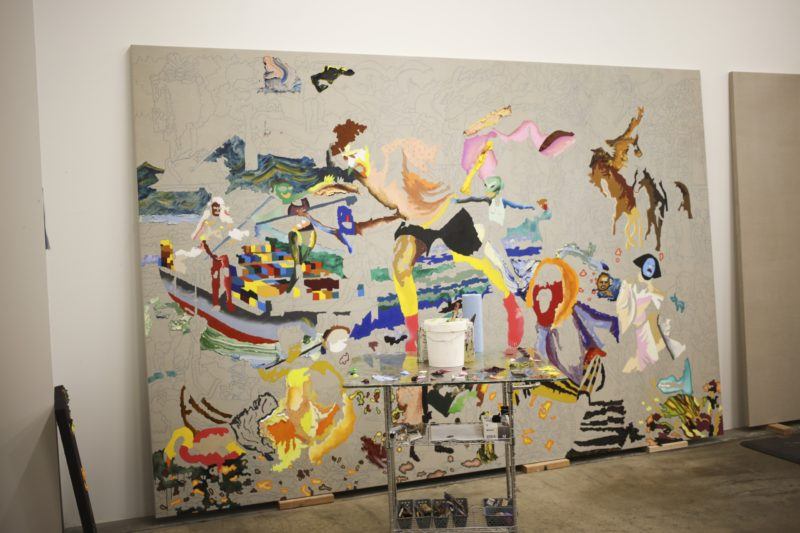

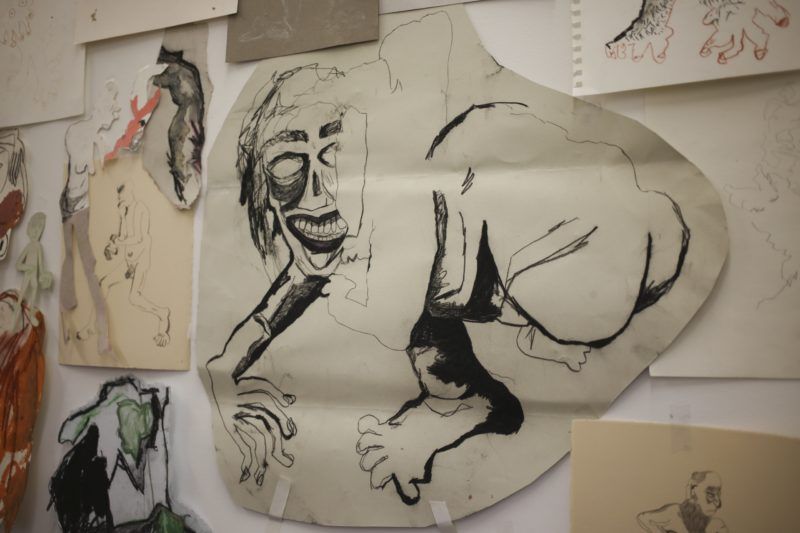
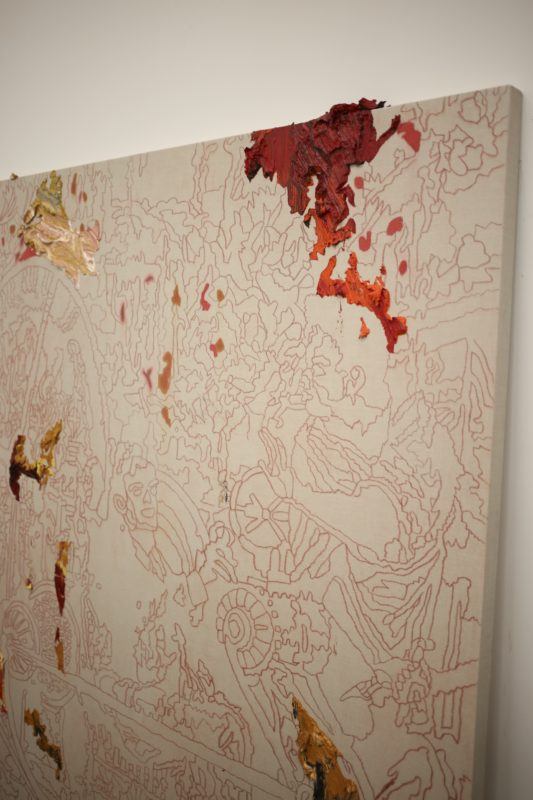
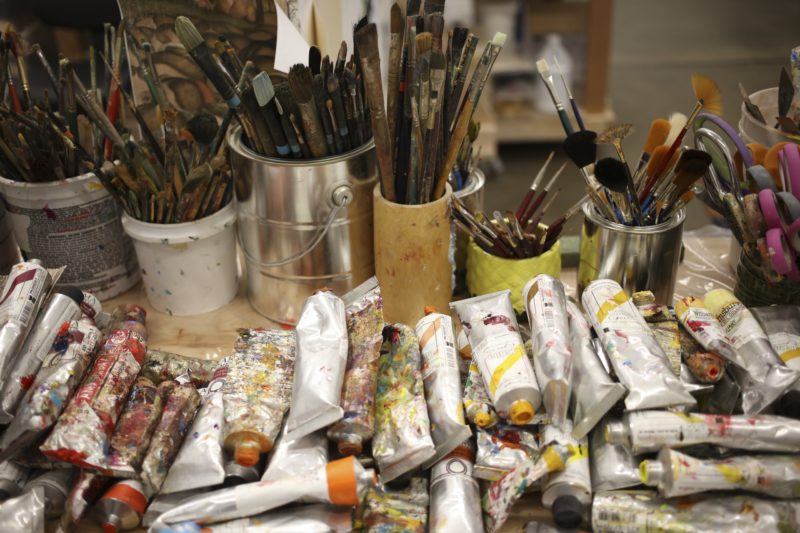
Art21 – Your paintings often start with a digital collage, what’s the process behind one of these paintings?
Cindy Phenix – I start by doing research and thinking about the general concept that I want to talk about in the painting, something happening in society. Then I have different scenes that I want to depict based on that idea. Once I’ve figured out the different scenes that I want to depict in a painting, I find pictures and images that fit these narratives. The majority of images I search for online, I also use images from reference books, and I walk around outside with my phone and take pictures. Then I make a collage in Photoshop and I project the collage on the canvas to make all the outlines. There could be 50 pictures in one collage. I’m taking different elements I like and finding a way that everything makes sense, or the perspectives connect. It’s really loose because I don’t have a specific line that I’m drawing, I’m following the shadow and the light from the collage. It’s very strange, but different shapes and lines just come together, to define and build something else.
I apply different techniques and materials to the painting. I have pastel under gesso to create specific forms and atmospheres, then I add oil stick, then I have oil paint mixed with wax to create textures that are structural, then I have pastels. Everything is different in terms of technique, there are different elements coming together. I like that my paintings overcharge, they have so much information in them, and you can keep looking at it, and looking at it. It’s important, because I want to create different answers in the painting.
What about collage as a process draws you to it?
When I think about collage it’s different fragments, particles, pieces. It’s different elements coming together. It’s a collection. A collection isn’t necessarily the most pretty or beautiful objects. When I was a kid I had a giant pencil and eraser collection. That makes me think, “Oh, a collection is what is strange, what is different.” If you have a collection and you use all of these different, strange, and interesting things together you create something that is strong, and powerful. What can you do with that? You could reinvent things for the better.
It also makes me think about quilting, and how different narratives are sewn together. The idea of collage as different narratives coming together, all different but somehow transforming one another. Making sense together, or sometimes distorting. In “Ecstatic Physical Interchange” (2022) I have a scene of people moving a mirror and then the mirror breaks, and then I have a person jumping on top of the broken mirror to kiss themselves. It’s strange to represent that. It’s the kind of thing that could physically happen, you know, it works in physical space that somebody could drop a mirror and someone else could jump on it, but nobody really would do that. I like to create these strange things with narrative in my paintings. Like, “What is happening?”.
I’m interested in what you said about collections, why is a new kind of collectivity important?
Right now you have more right conservative politics rising, and a lot of individuality. Not just in politics, but also in our work. We’re all available 24/7, for any kind of job. People say things like, “You’re better on your own.” I don’t think people are individualistic or selfish, but that we’re in a set up, and we don’t have control over it. In a time before, you would live in a house with your extended family, and there was this idea you would be helping one another. Now it’s like you need to achieve everything by yourself, and if you’re not strong in your own personhood then you’re a failure. But I think you build better with collectivity. If everyone was more united we’d progress faster, and we could just enjoy life more.
I think as artists, we are trying to create this new kind of collectivity. We can take strength from everything and we can create. I want to, ‘improve’ is not the best word, but I want to play a role in people’s lives. With my work people can gather together and connect the narratives and scenes, and become integrated in the work to create a new kind of collectivity. It’s important that the viewer is part of the work, the collectivity. I’m thinking how we can take the strength of everything and create a new kind of collectivity.
Original Interview conducted in February 2022, in Cindy Phenix’s studio in Los Angeles, California. Original photography by Brandon Stanciell. All other images courtesy the artist; Nino Mier Gallery, Los Angeles; Galerie Hugues-Charbonneau, Montreal.

